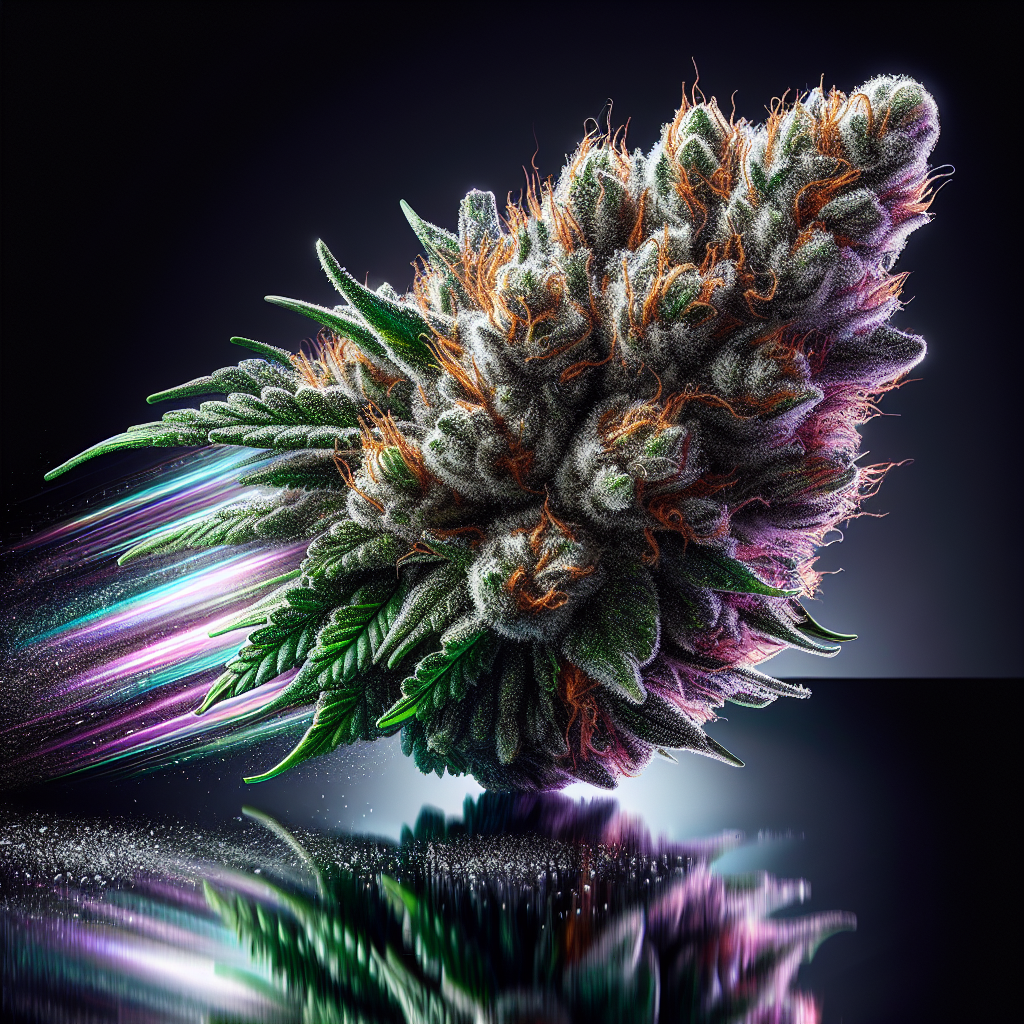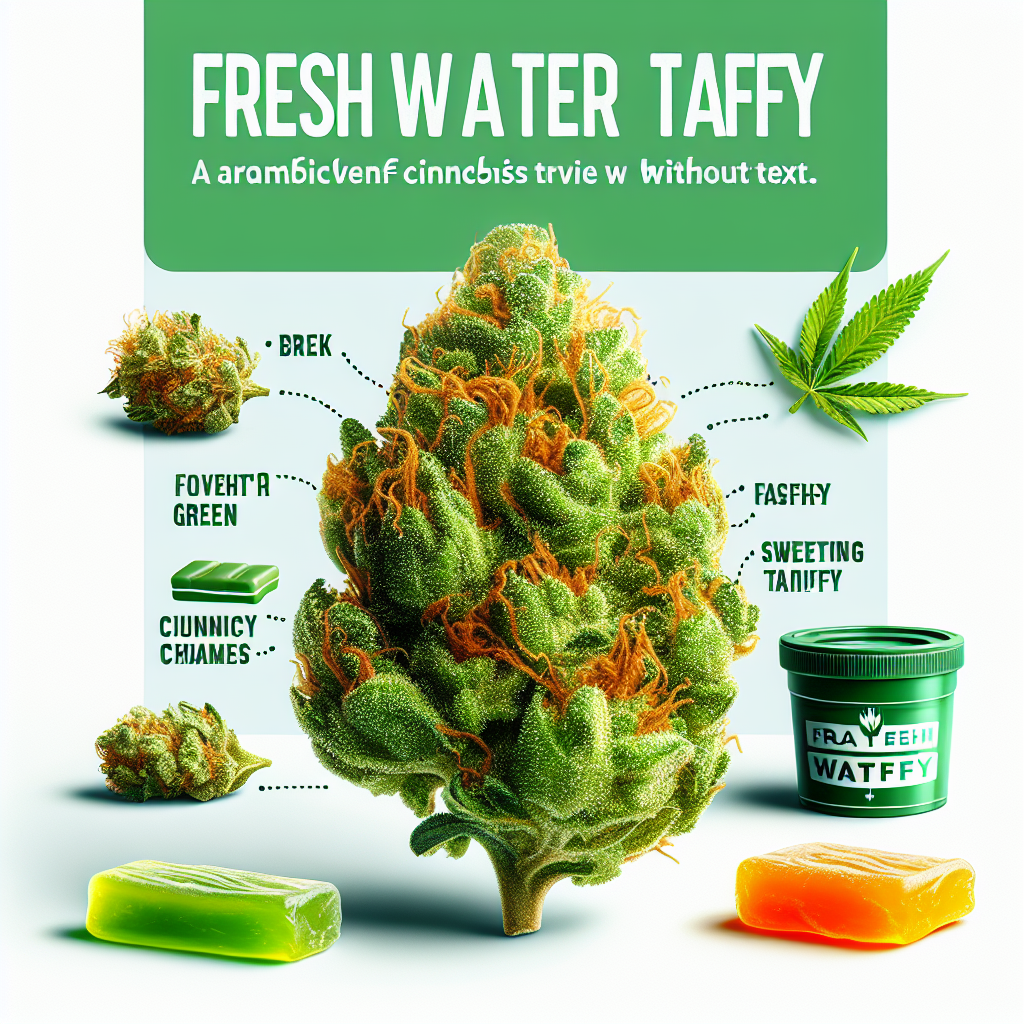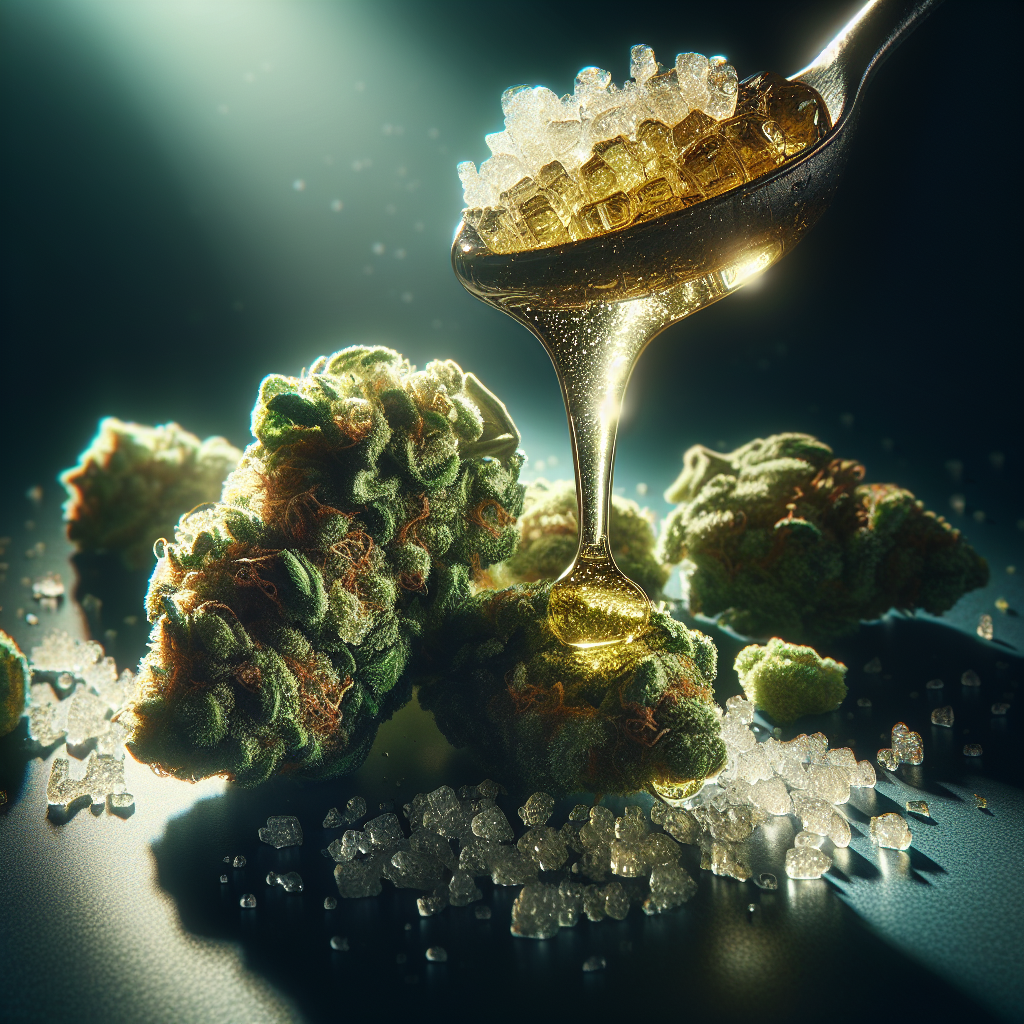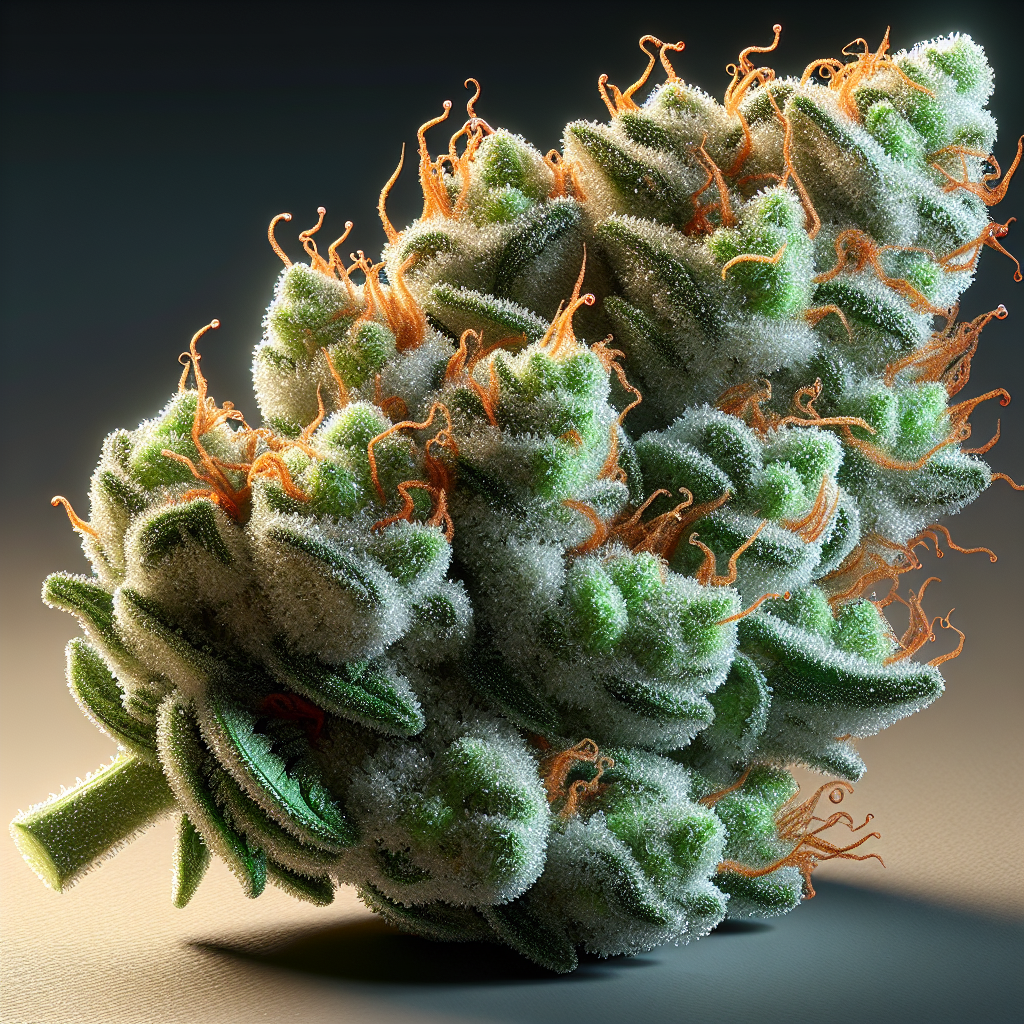
Ginger Ale Strain Review: Unlocking Unique Flavors and Effects
Introduction
The cannabis landscape is a vibrant and diverse ecosystem, filled with a plethora of strains, each offering unique flavors, aromas, and effects. One strain that has gained considerable attention in the cannabis community is the Ginger Ale strain. Known for its distinctive flavor profile and balanced effects, Ginger Ale has become a popular choice among connoisseurs and casual users alike. In this review, we will dive deep into its origins, cannabinoid composition, flavor and aroma, effects, medical applications, cultivation insights, and finally, we will summarize the overall experience with a review roundup.
Origins and Genetics
Ginger Ale is a hybrid strain, primarily bred from two renowned parent strains: Lemon Haze and Tangie.
- Lemon Haze lends its zesty flavor and uplifting effects, resulting from its high limonene content, which is known for its citrusy aroma and potential mood-enhancing properties.
- Tangie, on the other hand, is celebrated for its sweet, tangy flavor reminiscent of tangerines. This strain contributes to the aromatic profile and is known for its happy and euphoric high.
Together, these parent strains create a hybrid that offers a deeply interesting cannabis experience. While the specific genetic lineage can vary by breeder, the consistent traits among various phenotypes include a delightful flavor and a balanced high that can cater to different kinds of users.
Cannabinoid Composition
Ginger Ale is typically characterized by a moderate THC content, usually ranging between 18% to 24%. The strain also contains a lower CBD level, usually around 0.5% to 1%. This makes it primarily suited for recreational users, although its mild CBD levels might provide some therapeutic effects.
The exact cannabinoid profile can vary, but a common breakdown includes:
- Tetrahydrocannabinol (THC): 20%
- Cannabidiol (CBD): 1%
- Cannabinol (CBN): Minor amounts that may contribute to the overall experience
The predominance of THC, combined with a rich terpenoid profile, sets the stage for a complex and enjoyable consumption experience.
Flavor and Aroma
One of the standout features of the Ginger Ale strain is undoubtedly its flavor and aroma. The sensory experience kicks off with a burst of citrus, reminiscent of fresh ginger and citrus fruits, particularly lemon and tangerine.
Detailed Breakdown:
-
Top Notes:
- Citrus: The initial hit is characterized by zesty citrus notes that invigorate the senses, combining the sourness of lemon with the sweetness of an orange.
-
Mid Notes:
- Spice: There’s a subtle hint of ginger spice, echoing the strain’s name.
- Sweet Fruity Undertones: A sweet essence that adds an inviting sweetness to the earthy undertones, making it a multi-layered flavor experience.
- Finish:
- Herbal and Earthy: The aftertaste carries mild earthy and herbal notes, rounding out the flavor profile.
This combination of flavors makes Ginger Ale not just another strain; it transforms the smoking experience into a refreshing occasion, much like consuming a real ginger ale beverage.
Effects
The effects of Ginger Ale can be described as euphoric, uplifting, and balanced, allowing users to engage socially or explore creative pursuits without feeling overly sedated.
Immediate Effects:
- Euphoria: Right off the bat, users report feelings of happiness and an uplifting mood.
- Energy Boost: Many users feel a rush of energy as soon as they inhale, making it a great choice for daytime use.
- Enhanced Creativity: The cerebral effects can spark creativity and enhance thought processes, making it a favorite among artists and thinkers.
Duration and Intensity:
- After the initial high, the effects mellow into a more relaxed state. The overall experience can last from two to four hours, depending on tolerance and dosage.
- Users may also experience a slight body relaxation, making it comfortable for social activities without the couch-lock effect commonly associated with some indica-dominant strains.
Potential Negative Effects:
While Ginger Ale is considered a well-rounded strain, new users or those with a low tolerance should take note of potential negative effects, which can include:
- Dry Mouth: A common side effect among many strains.
- Mild Dizziness: Especially if consumed in large quantities.
- Anxiety: In some individuals, high THC levels may lead to feelings of anxiety or paranoid thoughts, particularly in those predisposed to such reactions.
Medical Applications
With its balanced effects and flavor profile, Ginger Ale can serve various medical applications. While scientific research on cannabis’s medical properties is still evolving, anecdotal evidence suggests that Ginger Ale may assist with:
- Anxiety and Depression: The euphoric and uplifting effects can relieve negative emotions, helping to improve mood and mental outlook.
- Chronic Pain Relief: Mild body relaxation can aid those who suffer from light aches and pains.
- Fatigue: Its energizing effects make it a good choice for combating fatigue and encouraging motivation for tasks and activities.
Usage Recommendations:
Given its potential benefits, Ginger Ale is best suited for daytime or early evening use, making it practical for both therapeutic needs and recreational enjoyment.
Cultivation Insights
For those interested in cultivating Ginger Ale, it is important to note some unique aspects of its growing conditions. This strain thrives in both soil and hydroponic setups, though it demonstrates particular resilience in well-drained, nutrient-rich soils.
Growth Characteristics:
- Flowering Time: Typically, Ginger Ale has a flowering time of around 8 to 10 weeks.
- Yield: The yield can vary but is generally moderate to high, averaging between 400 to 550 grams per square meter when grown indoors.
- Plant Height: It tends to grow to a manageable height, making it suitable for limited spaces.
Growth Conditions:
- Light Requirements: Growers should provide around 600 to 800 watts of light for optimal growth, especially during the flowering phase.
- Temperature: Ideal temperatures range from 70°F to 80°F (20°C to 27°C), with adequate humidity levels maintained between 40% to 60% during the vegetative stage.
Growers should also pay attention to nutrient levels, as Ginger Ale can be nutrient-sensitive, particularly during flowering. Regular monitoring and care can lead to flourishing plants and high-yield crops.
Comparison to Other Strains
When exploring the Ginger Ale strain, it’s useful to compare its unique aspects with other popular strains in the market.
-
Ginger Ale vs. Lemon Haze:
- Both exhibit citrus profiles, but Lemon Haze leans more on the zest and sour side, whereas Ginger Ale brings additional sweetness and a spiced ginger undertone.
-
Ginger Ale vs. Tangie:
- Tangie focuses on tangy orange flavors without the spiced earthiness of ginger. Users seeking a straightforward fruity experience might lean toward Tangie over Ginger Ale.
- Ginger Ale vs. Other Hybrids:
- Unlike some hybrids known for overpowering potency and sedation, Ginger Ale offers a more balanced experience that encourages energy and creativity, appealing to users looking for an uplifting experience without extreme lethargy.
User Experiences
Collecting insights from real users can add valuable perspectives. Anecdotal reports indicate that:
- Social Users: Many users noted Ginger Ale as a great strain for social interactions, expressing that its effects helped reduce social anxiety and promote engaging conversations.
- Creative Types: Artists, writers, and musicians reported enhanced creativity and improved focus during tasks, making it a go-to strain for brainstorming sessions or art production.
Surveying feedback from various cannabis forums and social media platforms reveals a generally positive reception for the Ginger Ale strain, with particular emphasis on its enjoyable flavor and balanced effects.
Review Roundup
After exploring the Ginger Ale strain in-depth, here is a summarized review:
-
Flavor and Aroma: 9/10
- A refreshing and distinct flavor profile that stands out among hybrids.
-
Effects: 8.5/10
- Balanced, euphoric, and energizing effects that cater to both recreational and therapeutic needs.
-
Medical Use: 8/10
- Effective for anxiety and mild pain management, though not a replacement for serious medical treatments.
-
Cultivation: 7.5/10
- Fairly easy to grow but requires attention to nutrient levels and light conditions.
- Overall Experience: 8.5/10
- A well-rounded strain that combines delightful flavors with a balanced and enjoyable high, making it suitable for a variety of users.
Conclusion
The Ginger Ale strain offers a unique, flavorful experience that captivates the palate and uplifts the spirit. Whether you are seeking relief from anxiety or simply wish to relax and enjoy the social setting, this strain provides a refreshing twist in the world of cannabis. With its moderate THC levels, balanced effects, and engaging flavor profile, Ginger Ale has carved out a niche for itself—a testament to the creative potential inherent in cannabis breeding.
Whether you are a seasoned user, a novice explorer, or a grower looking to expand your collection, the Ginger Ale strain deserves a spot on your radar. As always, consumption should be approached mindfully, respecting individual tolerance levels and local laws. Happy exploring!





